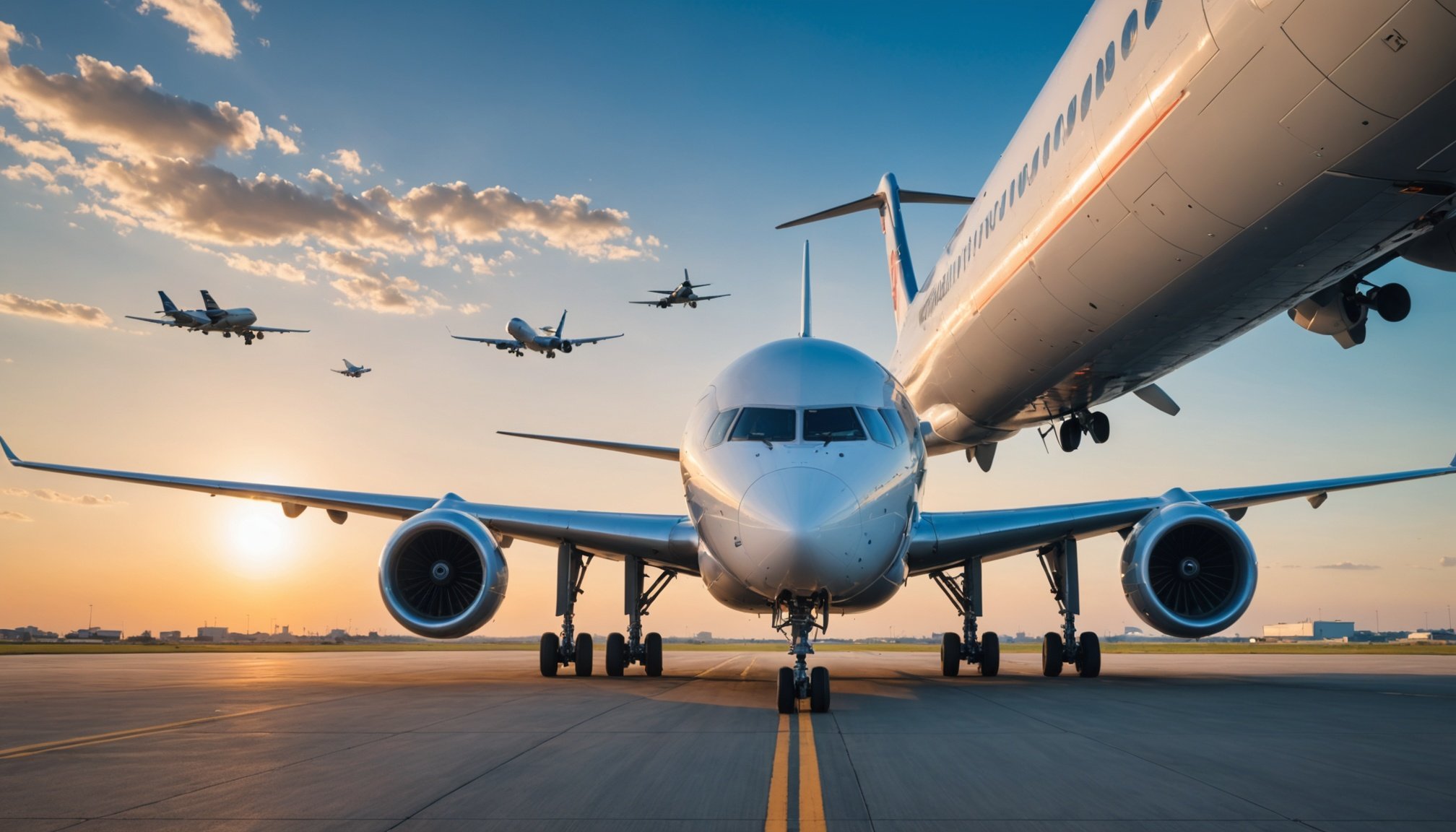Overview of Advanced AI Technologies in Aviation Maintenance
AI technologies in aviation are transforming maintenance practices by enhancing efficiency and reliability through predictive maintenance techniques. Currently, the aviation industry benefits from AI’s ability to process real-time data, ensuring aircraft reliability by predicting potential failures before they occur.
Predictive analytics play a vital role in elevating maintenance efficiency. By analysing historical and real-time performance data, AI can forecast maintenance needs, reducing unscheduled downtime and enhancing aircraft availability. This transformative approach not only saves costs but also ensures optimal operational conditions, contributing to overall aviation innovation.
Have you seen this : Unlocking the power of multilingual ai chatbots: key strategies for optimal performance
The importance of real-time data processing cannot be overstated. It enables continuous monitoring of an aircraft’s health, allowing for immediate responses to arising issues. This proactive maintenance strategy helps in extending the lifespan of aviation components and improving safety standards, ensuring that flights are conducted smoothly without unexpected interruptions.
AI technologies in aviation are continuously evolving, setting the stage for new innovations and methodologies in maintenance. These advancements highlight the synergy between technology and aviation, promoting a landscape where aircraft performance is optimised and safety is paramount. As AI systems become more sophisticated, their impact on predictive maintenance solutions will undoubtedly spearhead further innovation within the aviation sector.
In the same genre : Crucial Tactics for Safeguarding AI-Powered Financial Analytics: Best Practices for Secure Implementation
Innovative Solutions in Predictive Maintenance
In the realm of predictive maintenance solutions, leveraging advanced AI applications in aviation has emerged as a key strategy for maintaining operational efficiency and reducing costs. This involves several technological innovations, from machine learning models to IoT sensors, which collectively enhance the predictive analytics capabilities in the aviation sector.
Machine Learning Models for Predictive Analytics
Machine learning forms the backbone of predictive analytics in aviation, enabling the automation of data analysis processes. By utilising these models, airlines can predict potential maintenance issues before they escalate, thereby optimising maintenance schedules and minimizing unplanned downtime. This predictive approach not only boosts efficiency but also extends the life of aircraft components, providing a win-win for both safety and cost-effectiveness.
IoT Sensors and Data Collection in Aircraft Systems
The role of IoT technology cannot be understated. IoT sensors embedded in aircraft systems gather real-time data about various parameters, such as engine temperature and vibration levels. This continuous data stream enhances the accuracy and frequency of data inputs that are crucial for robust predictive maintenance strategies. As a result, airlines can maintain the highest standards of reliability and performance.
Integration of AI with Existing Maintenance Platforms
Integrating AI with existing maintenance platforms presents both opportunities and challenges. While AI greatly improves data analytics and decision-making processes, compatibility with legacy systems can be challenging. Nevertheless, overcoming these challenges will dramatically enhance maintenance technology innovations and, ultimately, the aviation industry’s operational landscape.
Real-World Applications of AI in Aviation Maintenance
Exploring AI case studies in aviation reveals compelling success stories in maintenance strategies. Airlines worldwide have implemented AI with remarkable results, showcasing the promise of predictive maintenance applications.
For instance, one prominent airline utilised AI algorithms to process vast amounts of flight data, drastically improving maintenance turnaround times. The integration of predictive analytics led to a substantial reduction in aircraft downtime and increased overall fleet availability. This efficiency boost exemplifies how AI transforms traditional maintenance schedules by pinpointing potential issues before they manifest.
AI case studies in aviation also highlight significant cost reductions. Several airlines have reported savings on both maintenance and operational fronts due to the precision offered by predictive maintenance. By anticipating necessary repairs, airlines can optimise resource allocation, thus reducing unexpected expenditures. Furthermore, these optimisations contribute to environmentally friendly operations by minimising unnecessary part replacements and enhancing fuel efficiency.
Numerous airlines, such as Lufthansa and Delta, have become industry leaders by embracing these technologies. Their success demonstrates the financial benefits and strategic advantages of predictive maintenance applications. The impact of AI in aviation maintenance is not just theoretical; practical implementations are actively reshaping the industry’s operational landscape, affirming the potential of technology-driven maintenance solutions.
Expert Insights and Future Trends in AI-Driven Aviation
Gain insights into the expert opinions on aviation AI as we explore anticipated advancements in predictive maintenance. Experts suggest significant growth in AI-driven predictive capabilities, with major improvements expected in data processing and maintenance cost optimization. Industry leaders indicate that aviation’s future will increasingly hinge on AI’s ability to streamline operations and enhance safety and reliability.
Predictions from Industry Leaders
Industry leaders project that AI advances will result in more sophisticated algorithms for predicting wear and tear, thereby increasing aviation safety improvements. With continuous data gathering and machine learning refinements, the accuracy of detecting potential issues will reach unprecedented levels, leading to proactive maintenance solutions.
Upcoming Innovations in AI for Aviation
Over the next decade, upcoming innovations will focus on operational efficiency in aviation. Expect AI to integrate more seamlessly with new technologies like quantum computing, enabling faster data analysis and more precise predictive results. Furthermore, the anticipated rise in autonomous aviation technologies will demand highly adaptive AI systems, ensuring safety compliance and optimizing flight operations.
As expertise in AI continues to develop, keeping abreast of these trends in aviation technology becomes crucial for maintaining a competitive edge in the industry. This evolution underscores the ongoing importance of investing in AI innovations to meet future demands effectively.
Cost Savings Through AI-Driven Predictive Maintenance
Implementing AI-driven predictive maintenance leads to significant cost reduction in aviation. Airlines that have embraced these technologies report quantifiable financial impacts, particularly in terms of optimising maintenance resources and reducing unscheduled repairs. By accurately predicting potential failures, AI allows for scheduled interventions, thus mitigating the high costs associated with emergency fixes.
Analysis of Cost Savings from Implementing AI
Numerous airlines have observed tangible AI financial benefits, with analyses showing a marked decrease in maintenance expenses over time. These savings are achieved through precise diagnostics and maintenance cost optimization, which extend the life of aviation components and decrease the need for replacements.
Comparison with Traditional Maintenance Approaches
Unlike traditional maintenance, which often relies on reactive measures, AI-driven strategies offer long-term savings due to the predictive nature of interventions. While the initial investment in AI solutions might be substantial, the strategic advantages gained surpass conventional methods.
Airlines experience ongoing reductions in labour costs and improved fleet uptime, illustrating that the switch from conventional maintenance to predictive solutions has both immediate and enduring economic benefits. As the aviation sector continues to evolve, integrating AI into maintenance regimes becomes not just advantageous but essential.
Enhancements in Safety and Efficiency through AI
The integration of AI technologies in aviation is significantly enhancing aviation safety improvements and operational efficiency. AI uses predictive maintenance to identify wear and tear in aircraft components, allowing for preemptive interventions that prevent potential failures. This proactive approach not only minimizes risks associated with mechanical issues but also contributes to overall AI in safety compliance. By predicting problems before they arise, airlines can ensure safer flights and reduce the likelihood of emergency repairs during operations.
AI also enhances risk assessment and management by processing vast amounts of data in real-time. This ability to continuously monitor aircraft systems ensures that any deviations from normal operation are quickly detected and addressed. With automated systems, airlines achieve higher operational efficiency by streamlining maintenance tasks and reducing time on ground.
Moreover, AI-driven solutions provide detailed analytics for airlines to optimise resource allocation, which reduces both maintenance costs and aircraft downtime. Through continuous advancements in AI, airlines are achieving unparalleled efficiency, setting new standards in safety and reliability while maintaining economic viability. As technology evolves, the aviation sector is poised to further embrace AI innovations for improved safety and operational excellence.











